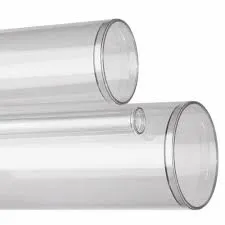Nov . 27, 2024 05:02 Back to list
DWC HDPE Pipe Benefits and Applications for Efficient Water Management Solutions
Understanding DWC HDPE Pipes An Innovative Solution for Water Management
In the field of civil engineering and irrigation, the choice of materials significantly affects the effectiveness and longevity of water distribution systems. Among the various options available, Double Wall Corrugated High-Density Polyethylene (DWC HDPE) pipes stand out due to their unique structure and advantages. This article aims to explore what DWC HDPE pipes are, their benefits, applications, and why they are increasingly favored in modern water management systems.
What are DWC HDPE Pipes?
DWC HDPE pipes are engineered pipes composed of high-density polyethylene, designed with a double wall structure that incorporates an inner smooth layer and a corrugated outer layer. This design provides greater strength and durability while maintaining a lower weight compared to traditional piping materials. The smooth inner wall ensures efficient fluid flow, reducing friction and resistance, while the corrugated outer wall enhances structural integrity, making these pipes suitable for a variety of challenging applications.
Advantages of DWC HDPE Pipes
1. Durability One of the most significant advantages of DWC HDPE pipes is their resistance to corrosion and chemical damage. Unlike metal pipes, which can degrade over time due to rust and other environmental factors, HDPE is resistant to a wide range of chemicals and does not corrode, ensuring a long lifespan.
2. Lightweight and Easy to Handle DWC HDPE pipes are notably lighter than traditional concrete or metal pipes, making them easier to transport, handle, and install. This reduces labor costs and time associated with installation, which is particularly beneficial in large-scale projects.
3. Flexibility The flexible nature of HDPE allows these pipes to withstand ground movement and settle without cracking or breaking. This characteristic is particularly advantageous in areas with unstable soil conditions or where land subsidence is a concern.
4. Cost-Effective Over time, the low maintenance and longevity of DWC HDPE pipes contribute to their cost-effectiveness. The initial investment might be comparable to other materials, but the savings garnered from reduced maintenance and replacement over the years can be significant.
dwc hdpe pipe

5. Sustainability DWC HDPE pipes are often manufactured from recycled materials, and they themselves can be recycled at the end of their life cycle. This aligns with the growing emphasis on sustainable practices within the construction and utilities sectors.
Applications of DWC HDPE Pipes
DWC HDPE pipes find extensive applications across various sectors, particularly in
- Stormwater Management These pipes are widely used for drainage systems in urban areas, helping to manage stormwater runoff efficiently and reduce flooding risks.
- Irrigation Systems Agricultural practices benefit from the use of DWC HDPE pipes, which facilitate efficient water delivery to crops, promoting sustainable farming practices.
- Sewer Systems Their resistance to chemical corrosion makes DWC HDPE pipes an excellent choice for sewer and wastewater management applications, ensuring the safe conveyance of waste materials.
- Telecommunications Beyond water management, DWC HDPE pipes are used in protecting and housing telecommunications cables, safeguarding them from environmental and physical damage while ensuring minimal disruption during installation.
Conclusion
In an era where efficient water management and sustainable practices are paramount, DWC HDPE pipes emerge as a superior choice in various applications. Their unique properties — durability, cost-effectiveness, and environmental friendliness — make them ideal for modern infrastructure needs. As cities and communities strive to enhance their water management systems, the adoption of DWC HDPE pipes will likely continue to grow, setting a new standard for effective and resilient water distribution solutions. Whether for large-scale drainage projects or agricultural irrigation, DWC HDPE pipes represent an innovative solution that meets the demands of today and prepares for the needs of tomorrow.
-
High-Quality PPR Pipes and Fittings Durable ERA PPR & PVC PPR Solutions
NewsJul.08,2025
-
Black HDPE Cutting Board - Durable, Non-Porous & Food Safe HDPE Plastic Cutting Board
NewsJul.08,2025
-
High-Quality CPVC Panel Durable HDPE & PVC Panels Supplier
NewsJul.08,2025
-
Double PE Welding Rod Supplier - High Strength, Durable & Versatile Welding Solutions
NewsJul.07,2025
-
High-Quality PVC-O Pipe Supplier Durable 75mm PVC Pipe & Connections Leading PVC Pipe Company
NewsJul.07,2025
-
HDPE Drainage Pipe Supplier – Durable & Corrosion-Resistant Solutions
NewsJul.06,2025

